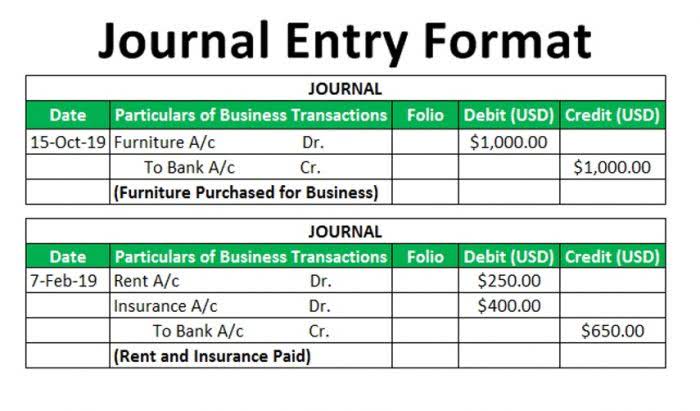Content

When inventory falls below its reorder point, which is indicated by the number of units in stock, that means it’s time to place an order to replenish it. According to our example, we have a daily sales velocity of 5 chairs per day, a lead time of 35 days, and 15 chairs of safety stock. In English, that says to reorder when inventory equals the amount you expect to sell during the time it takes to get your order from the supplier, plus your safety stock . In other words, it calculates the point where if you don’t reorder, your inventory will drop to unacceptably low levels — or to zero, if you don’t have safety stock. Next, we need to realize that we use up a certain number of this item in the length of time it takes our supplier to make a delivery. To estimate the number we’ll use during this time, we multiple the average daily demand by the average lead time. Additionally, let’s say that we typically use about 10 of these items per day in our production line, but we also have days where we’ve used as many as 14 in a day.
- Can’t you just wait until you’ve completely run out of inventory to reorder?
- The last thing you want to do is forget to place an order when you reach your reorder point and not be able to meet customer demand.
- That way you can still fulfill new orders and use batch picking while awaiting products in shipment.
- As for your customers, they’ll soon know that you’re a seller that’s always able to deliver, and now that you’ve won their trust, they’ll always be coming back for more.
You also have enough safety stock units – to cover problems with Supplier B or a sudden increase in demand. For Supplier B, your reorder point will be higher because you need to account for more days of stock between your order and when new stock arrives. To accurately calculate a product’s reorder point, it’s important to understand these factors and how they might impact your sales velocity. Multiply the average number of daily orders by the average lead time. Multiply the maximum number of daily orders by the maximum lead time that may be required in case of supplier delays. Does order frequency need to be taken into account when looking safety stock settings within the re-order point formula. One point I didn’t touch on in the article was the safety stock for items with a short shelf life, like food.
Calculate Reorder Point With ROP Formula
Reorder points configure to accommodate demand while not unnecessarily tying up money in excess stock. Expected consumption of this product per the corresponding time unit . As seen above, these forecasts can stem from deterministic or probabilistic methods. Nevertheless, in both cases, this is a crucial factor when calculating the reorder point.
If you’re running a tight ship where every dollar is budgeted, that lost money must come from somewhere. As a result, you make a highly conservative — and uninformed — estimate about when you should reorder product, leaving your shelves cluttered with slow-motion SKUs. And once the sales die down, you may find yourself with capital tied up in excess or deadstock . There’s nothing worse than watching traffic hit your site while an item is out of stock. With best-in-class fulfillment software and customizable solutions, we provide hassle-free logistics support to companies of all sizes.

Manual inventory tracking and reorder point calculation can be time-consuming, tedious, and error-prone. Look for local suppliers, increase collaborations with your existing suppliers, and conduct an audit on your existing supply chain to see where you have the biggest opportunities. Thanks to a few pieces of software and an initial time investment, you can take the arduous task of reorder point calculation down to a mere 15-minute workflow at the end of each workday. Now that you know how to calculate reorder points for your products, let’s go over some frequently asked questions regarding reorder points.
How to Find Lead Time Demand
It saves time.Using software to automate your inventory management process saves time by increasing efficiency, allowing you to allocate resources to other tasks. It saves money.With the right inventory levels, you can eliminate unnecessary carrying costs. Reorder points can help you transform the way you handle inventory throughout your supply chain. Having ample stock on hand is important to both keep customers happy and reduce profit loss. Using production andshelf-life management softwarelike Katana allows your company to set reorder points for each raw material and finished product variant under your roof. The reorder quantity formula is going to help you calculate your reorder point formula.
Once your inventory level hits this number you should be placing an order for another shipment of products. Business can change on a dime, so being able to view and adjust your inventory anywhere is an advantage. This is especially true if you’ve got multiple locations or employees who need to access your inventory data out of office. The reorder point is the most important thing when it comes to purchasing from a vendor. If your reorder points are not frequent enough, you will have lost sales.
What is a good EBITDA ratio?
An EBITDA margin of 10% or more is typically considered good, as S&P-500-listed companies have EBITDA margins between 11% and 14% for the most part.
Knowing your ROP helps you place an order with enough time to receive, process, and restock it. In other words, if you want to run an efficient business, you can’t rely on intuition to determine when to reorder stock. A grocery store, for example, would likely have higher reorder points for quick-selling produce than a furniture store would for slow-selling mattresses. In this retailer’s guide to reorder points, you’ll learn everything you need to know to set effective reorder points and much more.
How automatic reorder notifications can make managing stock easier
If your supplier only accepts orders on certain days of the week, you have to include that in your calculations. Next you need to find how long it takes for your products to arrive after you order them. The more inventory you keep on hand, the more it costs to store it. It also means more cash tied up in the cost of the inventory itself, making your finances less liquid. Finally, some inventory will depreciate in value over time, be it perishable foods or trendy clothing. Tracey Smith is the President of Numerical Insights LLC, a boutique analytics firm that helps businesses derive value from data and improve their bottom line. If you would like to learn more about how Numerical Insights LLC, please visit Tracey Smith through LinkedIn.
- Using the reorder point formula will help you calculate these critical metrics and keep your customers satisfied.
- In addition, products that sit around for a long period of time have a higher chance of spoilage, damage, loss, or theft.
- If you want to have greater control over your inventory, then you should check out the advantages of usingVeeqo’s inventory management software.
- Daily Average Usage is the quantity sold of that SKU over a period divided by the days of the period.
- Tracey Smith is the President of Numerical Insights LLC, a boutique analytics firm that helps businesses derive value from data and improve their bottom line.
To read future posts, you can join Ms. Smith’s network bysigning up here. Suppose we have a supplier that has been delivering this item to us, on average, in 14 days. However, over the last year, there have been deliveries of this item that have taken as much as 25 days to reach us. So, although having an effective reorder point policy means you have freed up more time in your https://www.bookstime.com/ week, you still need to stay on top of things by making new reorder point calculations. Now you know how and when to order new materials to avoid stockouts. However, the real question is how much material do you have to order to keep your productions running smoothly. You get a perfect balance, safe in the knowledge that you can deal with anything, and still keep going.
How much do reorder points vary?
So the 9 usual days of supplier delay + the 6 days of ordering delay + the 2 days from the supplier + 1 day of road delays. How long will it take to receive your goods when everything goes wrong? In an ideal world, your product would always arrive on time, and your orders would always be placed with no delay.

Inventory management software, like Lightspeed, make running your business even easier with automated reordering. When your inventory reaches its reorder point, this retail inventory How to Calculate Reorder Points management tool can place a new order on your behalf. With automations like this in place, you can spend more time doing the things that only you can do for your business.
Optimize Inventory: How To Calculate Bar or Restaurant Reorder Points
If their stock reaches this reorder point, they will need to replenish their inventory. This formula takes into account costs related to set up, production, and storage, as well as other factors that include demand. The aim is to specify the most favorable product quantity for your business that goes beyond your replenishment schedule. It’s critical to recognize that your reorder point is simply a measure of the number of units needed in a replenishment order. For figuring out an optimal amount of units – and to help improve operations and reduce costs – figure out your economic order quantity. To capture safety stock, you can input “buffer days,” which are additional days factored in with a vendor’s lead time to increase the number of units ordered.
The trick is that target inventory levels by themselves represent implicit quantile demand forecasts. The pinball loss function let you evaluate the quality of those implicit forecasts. Users can purchase the POS Basic software for a one-time fee of $1,200, which allows them to set reorder points.
Indeed, when making an order, one has to anticipate the stock already on its way. For consistency of the analysis, the input settings need to be extracted at the same time. Based on the conventions we follow in this sheet, this time can be either at the very end of Day 0 or just before the beginning of Day 1. Then, those settings are validated against sales data that happen afterward. Reducing the pinball loss for your inventory can only be achieved through better forecasts . As a rule of thumb, a reduction of 1% of the pinball loss will generate between 0.5% to 1% of safety stock reduction while preserving the same frequency of stock out.
If you sell 5 chairs each day, for example, your daily sales velocity is 5. In Clara’s example, she already knows her average sales and lead time.
When your stock reaches the minimum level, it triggers a reorder alert. You then have to replenish your inventory to its max level and then sell that stock through to the min level and repeat the cycle. By optimizing your inventory levels, you can keep your storage fees low and prevent tying up too much cash in inventory. Lightspeed is a cloud-based commerce platform powering small and medium-sized businesses in over 100 countries around the world. That means that when your inventory falls to 62 lamps, it’s time to order more lamps. Unfortunately, these “glamorous” accomplishments aren’t representative of what you’ll encounter as part of daily operations.
Let us now understand the formula for calculating the reorder point. Holding CostsHolding cost refers to the cost that an entity incurs for handling and storing its unsold inventory during an accounting period. It is calculated as the sum total of storage cost, finance cost, insurance, and taxes as well as obsolescence and shrinkage cost. Discover the products that 31,000+ customers depend on to fuel their growth. Exempli may sell 2.83 of these medium, blue sweaters on an average day, but some days they sell as many as 5. Look through your purchasing history and find how high your daily usage could go. Using the safety stock equation ensures that even unforeseen circumstances won’t lead to understocking.
This is how eCommerce businesses operate when they don’t use the reorder point formula to calculate reorder points. The reorder point model is an option for businesses that use perpetual inventory management and want to avoid any excess storage. It is a very strict inventory model and will only work for certain businesses. This is related to the level of service accepted within the company. You cannot assess the quality of the reorder point for a single SKU by looking at a single point in time. Unless your service level is very close to 50%, the pinball loss has a strong variance.
- For most companies, service levels float somewhere between 90 and 100 percent.
- You can set reorder points and reorder amounts on Vend, which will help the platform determine when an item is considered to be low on stock.
- It lets you know the items that are selling like hotcakes during a particular season and those that won’t.
- Assume that the provider is dependable in stock and has a distribution centre loaded with mobiles prepared to send immediately.
- When inventory levels reach that point, either your WMS automatically places an order, or your managers do so manually.
- Let us now understand the formula for calculating the reorder point.
It’s the variation in the supplier delivery times that is more difficult to obtain. While you may choose to use an approximation of the lead times by using the supplier’s contracted lead time, I do recommend studying your lead time variation at least once a year. These times tend to vary quite a bit as different industries see increases and decreases in demand. For more information on studying supplier delivery times, watch Episode 3 in this video series called How to Calculate Supplier Delivery Performance. These are all values which can be calculated, but you need to pick a period of time over which to calculate them. Do you know how to calculate the optimal reorder point for your best-selling products?
The Reorder Point Formula
One of the top reasonsbusinesses lose customersis that they failed to meet expectations, and a store that lacks inventory doesn’t meet expectations. Maybe the customer will purchase an alternative product if you have it, but you might lose their business to a competitor. Tracking your reorder point prevents a product from running out before customers can purchase it.










































